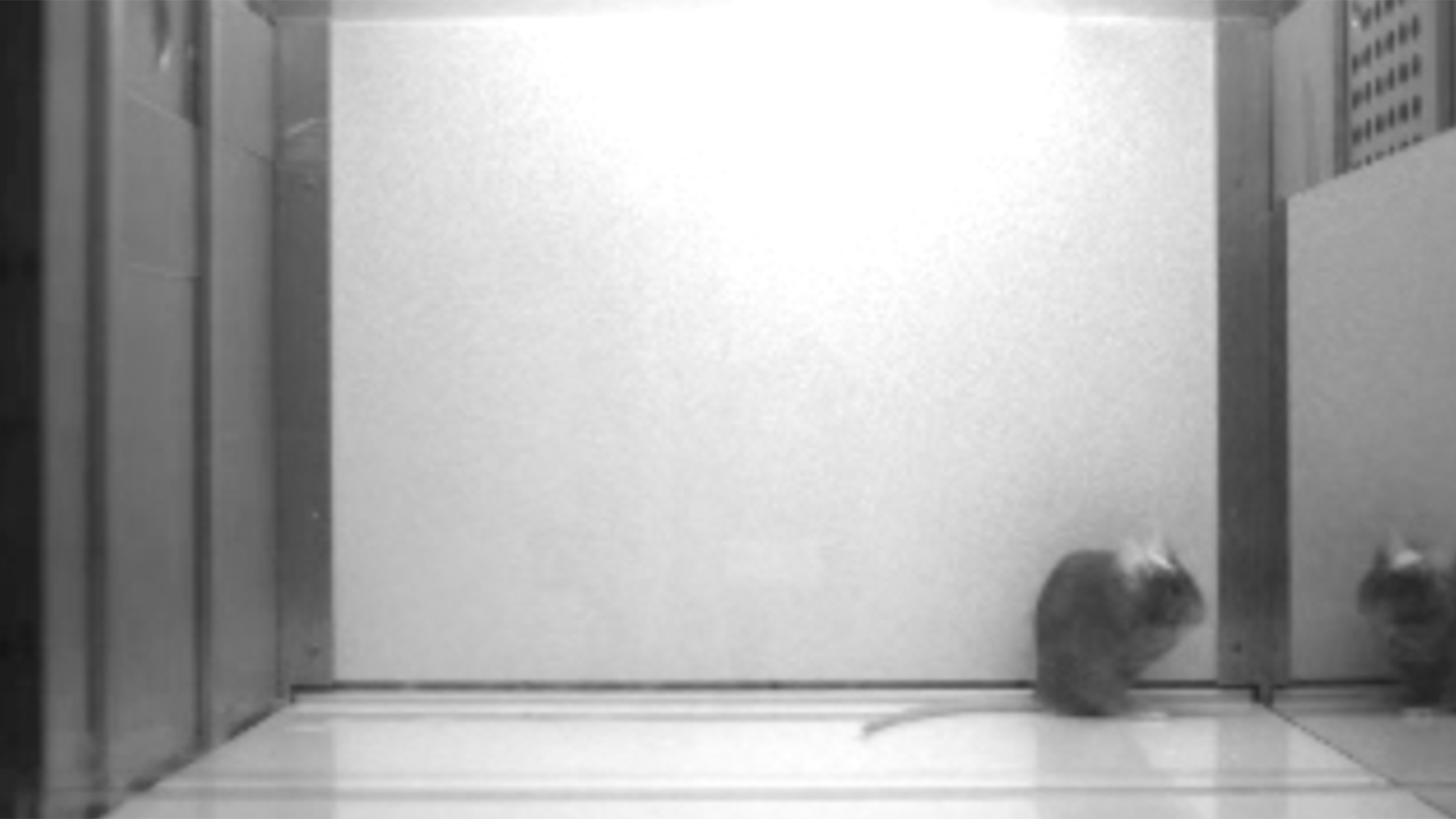

Mice may be one of only a small group of mammals that can recognize themselves in a mirror. A group of laboratory mice were given an assessment of consciousness called the mirror test. The study published December 5 in the journal Neuron suggests that some rodents display a behavior that resembles self-recognition and might be able to differentiate themselves from other mice.
[Related: What video game-playing mice taught neuroscientists about memory-making.]
Previous studies have shown that mammals including humans, great apes, chimpanzees, elephants, and dolphins have demonstrated the signs that they can recognize their reflections. The fish cleaner wrasse and the large-brained bird the Eurasian magpie have also demonstrated this ability in other studies. (However, the mirror test has faced criticism for its ability to measure self-awareness and can produce false negatives in human children.)
In the study, scientists from the University of Texas Southwestern Medical Center in Dallas marked the foreheads of black-furred mice with a spot of white ink, or black ink on white-furred mice. They observed the mice spending more time grooming their heads in front of the mirror—presumably trying to wash away the new ink.
However, the team cautions that this does not mean that the mice are fully “self-aware.” The only mice that showed this potentially self-recognition-like behavior were those either already accustomed to mirrors, mice that socialized with other animals who looked like them, and the mice with a relatively large spot of ink on their heads.
“The mice required significant external sensory cues to pass the mirror test—we have to put a lot of ink on their heads, and then the tactile stimulus coming from the ink somehow enables the animal to detect the ink on their heads via a mirror reflection,” study co-author and psychiatrist Jun Yokose said in a statement. “Chimps and humans don’t need any of that extra sensory stimulus.”
Next, the team used gene mapping to identify a subset of neurons located in the hippocampus that are involved in developing and storing visual self-image. According to the team, these brain patterns provide a first glimpse of the neural mechanisms behind self-recognition. Pinpointing this activity has been difficult in neurobehavioral research.
“To form episodic memory, for example, of events in our daily life, brains form and store information about where, what, when, and who, and the most important component is self-information or status,” study co-author and neuroscientist Takashi Kitamura said in a statement. “Researchers usually examine how the brain encodes or recognizes others, but the self-information aspect is unclear.”
They saw that the neurons in the mouse’s hippocampus were activated when the mice appeared to recognize their reflections in the mirror. Socialization may play a key role in the mice developing self-recognizing behaviors. The more socially isolated mice did not exhibit any increase in grooming behaviors during the mirror and ink test.
[Related: How science came to rely on the humble lab rat.]
“A subset of these self-responding neurons was also reactivated when we exposed the mice to other individuals of the same strain,” says Kitamura. “This is consistent with previous human literature that showed that some hippocampal cells fire not only when the person is looking at themselves, but also when they look at familiar people like a parent.”
In future studies, the team plans to try and disentangle the importance of visual and tactile stimuli like the ink to see whether mice can recognize changes in their reflection without it. This could be achieved with technology similar to popular photo filters like the ones used to create fake bunny ears on social media posts. The team also plans to study how other regions in the mouse brain may be involved in self-recognition and see if these areas of the brain share information.
“Now that we have this mouse model, we can manipulate or monitor neural activity to comprehensively investigate the neural circuit mechanisms behind how self-recognition-like behavior is induced in mice,” says Yokose.
